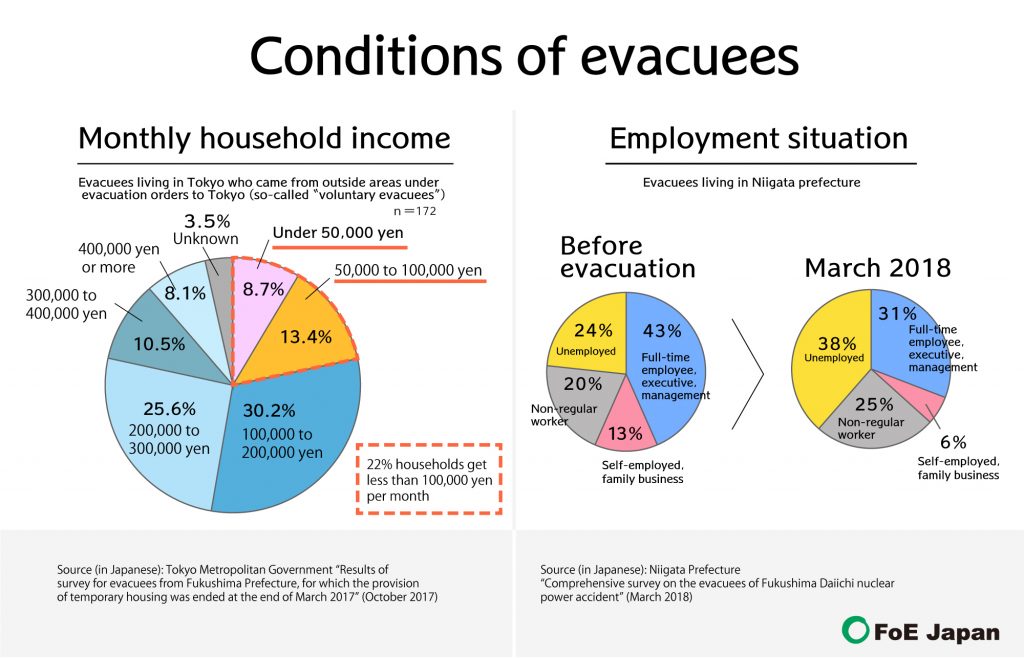
Evacuees continue to suffer financially nearly a decade later.
In March 2017, the Japanese government and Fukushima Prefecture stopped providing housing assistance to evacuees who came from areas outside of areas under evacuation orders.
In July and August of the same year, the Tokyo Metropolitan Government conducted a survey of the evacuees who were subject to the termination of housing assistance, and found that 67% continued to live as evacuees.
The survey also found that 22% of the households earned only 100,000 yen or less and 52% earned 200,000 yen or less per month. These numbers show that evacuees are facing extremely difficult economic conditions. (Average monthly income for Tokyo households was 517,600 yen as of January 2017. )
A Niigata Prefecture committee that surveyed evacuees to compare the situation before and after evacuation found that the number of households with five or more persons had decreased while the number of one- and two-person households had increased. This suggests that families are being split up due to the evacuation.
Niigata also found that the average monthly household income had decreased by 105,000 yen, and that the number of part-time and unemployed workers had increased.
Some municipalities have conducted similar surveys to understand the actual conditions for evacuees, but the Japanese government has not conducted such surveys, so only fragmentary information is available on the conditions facing evacuees.
>Learn more
Sources (in Japanese) :
Tokyo Metropolitan Government, “Result of the survey on the suspension of housing assistance for the nuclear disaster evacuees”, October 2017
http://www.metro.tokyo.jp/tosei/hodohappyo/press/2017/10/11/13.html
“Average monthly income in Tokyo” https://www.toukei.metro.tokyo.lg.jp/seikei/2017/sb17130000.htm)
Niigata Prefecture, “Comprehensive study on the life of evacuees of the nuclear accident” March 2018, https://www.pref.niigata.lg.jp/uploaded/attachment/93773.pdf
